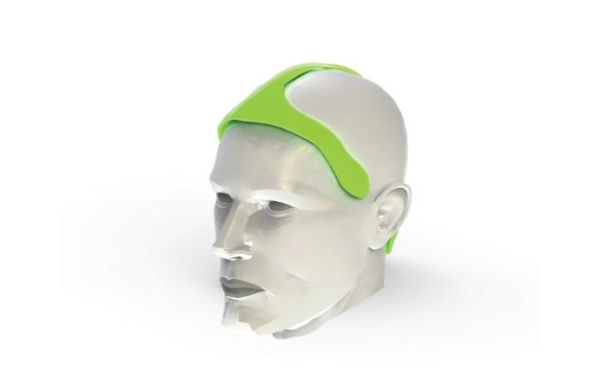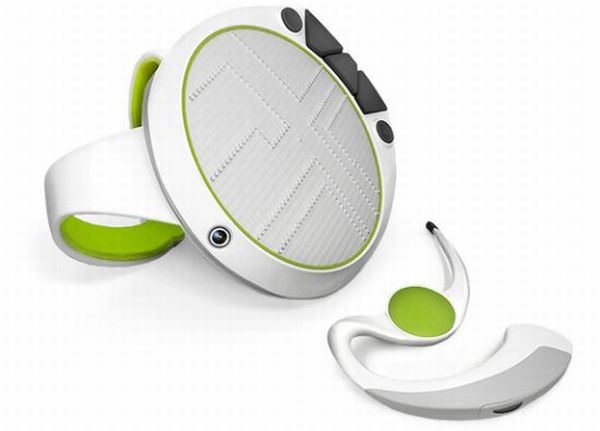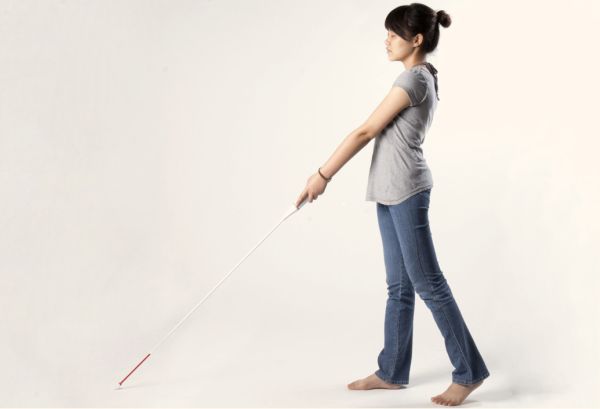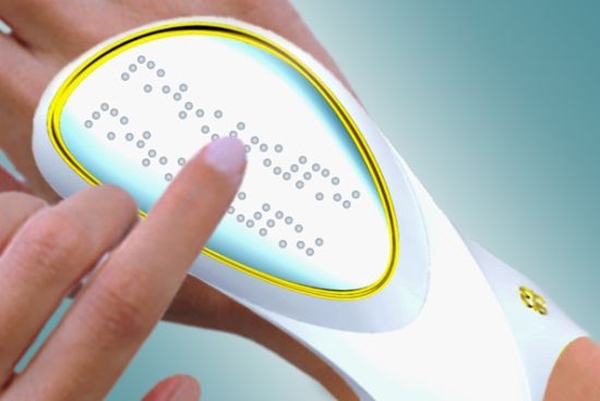The concept
Not having the sense of sight can be one of the most traumatic experiences in life that makes it very difficult to lead a normal life. The trauma is even more magnified for athletes and runner who have to depend on guides to help them compete in races. The Guipo is an adjustable device worn on the head that allows blind runners to participate in 100-meter dashes without requiring the help of guides. The device consists of two vibrators, housing, a battery and an electronic compass. When the runner is ready to commence a 100-meter dash, the runner needs to be on his mark. Just before the race starts, the runner needs to turn on the Guipo after which the device will register whether the runner maintains the course in a straight line.

The Target
Blind runners are coached to finish 20 meter dashes on their own without needing the services of a guide. To make the blind runner learn to rely on their hearing abilities and feel confident, coaches train them with claps. The Guipo is aimed specifically at runners competing in 100 meter dashes and helps them in competing in these races without requiring the services of a guide runner.
The need
Blind runners need to be tethered to guide runners during 100 meter sprints and are allowed to use two lanes with the guide telling the blind runner whether he/she is running in a straight line. However, tethered blind runners encounter many problems. They need to ensure that they don’t trip the race, the blind runner cannot move freely because they are tethered to another person, the heights of the runner and the guide need to be matched to ensure compatibility between their running paces, the movement of the tethered arms of both the guide and the blind runner is restricted and they need to coordinate their arm movement and both the runners need to maintain the same speed while competing. Even though these athletes are trained to use audio feedback like the clap of a hand or a call from their coach to maintain a linear course, these methods cannot be employed during a race since it interferes with the performance of other athletes as well.
Key features
The Guipo is designed around accurate measurements and measures deviations from the straight line very accurately. Being a low energy consumption device, the Guipo can be used by the runners to practice before competitions without having to worry about running out of battery power. The product is light weight and doesn’t hamper the performance of the runner. The device is fully adjustable and can be customized to each runner’s physical dimensions and doesn’t slip off during a race.
The solution
When the blind runner starts to deviate from his linear course, the Guipo starts to vibrate and makes a noise to allow the runner to correct his course. If the runner is deviating on the left side, the device vibrates makes a noise on the right side and indicates the runner to adjust his course accordingly. Since the runners would have been using the product right from the training stage, they would be accustomed to using the input for course correction. If the runner fails to correct his course in time, the vibration and the noise gets more intense over time.
Related trends
1. Touch & Go navigator makes life autonomous for visually impaired

The Touch & Go navigation system for the visually disabled is created by designer Natalia Ponomareva. Worn on the hand, the stylish device features a tactile map that can be “read” by the blind user. An arrow indicates the direction in which the user is moving and a plum at the center indicates the user’s current position. An ultrasonic transmitter-receiver offers audio feedback via earphones and informs the users whether they are on the right course.
2. Origin: A GPS powered walking cane to navigate visually impaired

This walking cane named Origin is created by designer Xun Ye and allows the blind to navigate the streets on their own. The collapsible cane features a Braille scale, a switch, speakers and a microphone. Before setting off, the user can speak the name of their destination into the microphone and the GPS confirms it via a Braille message. The GPS keeps track of the user’s movement and informs them of upcoming turns.
3. Thimble finger glove allows multimedia access to the visually impaired
The visually impaired are perhaps the only segment of society that has not been extended the benefit of modern multimedia gadgetry. The Thimble finger glove innovated by designers Zack Bennet and Erik Hedberg allows the blind to “read” text on paper in Braille form using the glove. An optical scanner embedded within the fingertips of the glove turns text on a paper into Braille script that can be felt and read by blind users.
4. na:vi: GPS navigating system for the visually impaired

The na:vi is a GPS navigating system developed by designers Joe Müller, Kristina Chudikova and Pia Weitgasser. The aid allows users to navigate through streets and public spaces on their own using a wrist worn device. The aid allows an accurate and safe direction finding with its 3D user interface allowing the user to use GPS navigation and a laser range finder to move freely. Using gyroscopes, the device provides haptic feedback to the user to make navigation smoother.

